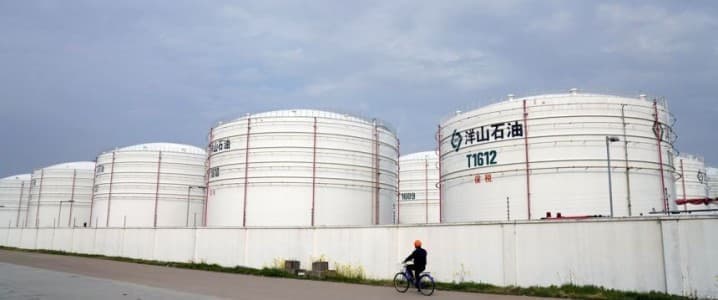China’s oil demand is rising with the reopening from Covid restrictions after nearly three years. The initial demand trend suggests a reopening in fits and starts, but analysts say that it will be China that will account for half of this year’s global oil demand growth, with total world oil demand reaching a record.
And while China’s oil demand is set to rebound, the leaders of the OPEC+ group, Saudi Arabia and Russia, will be competing to meet the growing demand in the world’s largest crude oil importer.
Saudi Arabia sells its crude oil under long-term contracts, so it has a guaranteed share of the Chinese market. But Russia, having pivoted to Asia for crude and fuel sales after the Western sanctions, is offering its oil at discounts and could attract more Chinese buyers who don’t abide by the G7 price caps.
The Saudis are signaling expectations of a strong rebound in China’s demand by unexpectedly raising their prices for Asia. But these prices cannot compete with discounted Russian barrels, and Chinese buyers may opt for requesting the minimum volumes from Saudi Arabia allowed under the long-term contracts OPEC’s top producer, Reuters’ Asia Commodities and Energy Columnist Clyde Russell argues.
This week, Saudi Arabia surprised the oil market by raising the official selling price (OSP) of its flagship crude going to Asia in March. Saudi Aramco lifted the price of its flagship Arab Light grade to Asia for March loadings by $0.20 per barrel to a premium of $2.00 a barrel over the Dubai/Oman average, the benchmark, off which Middle East’s oil is priced in Asia.
Related: Tesla’s Huge Model 3 Discounts Lift Car Sales In China
The surprise price hike was the first increase in Saudi oil prices for Asia since September and likely reflected Saudi expectations that demand in Asia will be rising from the second quarter onwards.
It is not only Saudi Arabia that is optimistic about China’s oil demand recovery.
The reopening is putting upward pressure on global oil demand, and half of this year’s demand growth is set to come from the Chinese growth in consumption, the International Energy Agency (IEA) says.
The agency said in its Oil Market Report for January that global oil demand was set to rise by 1.9 million barrels per day (bpd) in 2023, to a record 101.7 million bpd, with nearly half the gain coming from China following the lifting of its Covid restrictions.
“China will drive nearly half this global demand growth even as the shape and speed of its reopening remains uncertain,” the agency noted.
The EU ban on Russian oil products – in place from February 5 – could soon mean that “the well-supplied oil balance at the start of 2023 could quickly tighten however as western sanctions impact Russian exports,” the IEA said in its January report.
Russia’s exports to China, however, are soaring to an estimated 2.03 million barrels per day (bpd) in January, up from 1.52 million bpd in December, per Refinitiv Oil Research data cited by Reuters’ Russell. To compare, Chinese imports of Saudi crude averaged around 1.77 million bpd last month.
The state giants of China, including PetroChina and CNOOC, have recently bought more Russian crude oil and could further ramp up imports from Russia to meet demand with cheaper oil, according to an Energy Aspects note this week carried by Bloomberg. If China moves to fill its reserves, the intake of Russian oil could jump to 2.5 million bpd, Bloomberg notes.
In addition, Russia had already diverted most of its fuel oil and vacuum gasoil (VGO) exports to Asia and the Middle East even before the EU embargo on Russian petroleum products came into effect on February 5. And independent Chinese refiners are now big buyers of Russian fuel oil to process into gasoline and diesel, considering the cheap Russian product and the lack of crude oil import quotas for many of the private refiners, trade sources tell Reuters.
With China’s reopening, Saudi Arabia will face stiffer competition from its OPEC+ partner, Russia, for market share in the world’s top crude oil importer.
By Tsvetana Paraskova for Oilprice.com
More Top Reads From Oilprice.com:
- Republicans Seek To Scrap New Emissions Rule For Heavy-Duty Trucks
- Central Bank Buying Spree Lifts Gold Prices
- Bulgaria Remains Russia’s Number One European Oil Buyer


















Russia’s crude oil exports to China in 2022 averaged 1.9 mbd. And while the Chinese market is the world’s biggest oil import market capable of absorbing large volumes of exports from both Russia and Saudi Arabia, Russia will be the biggest supplier as it has the added advantage of addressing China’s energy security concerns.
Saudi oil exports have to pass through two hazardous chokepoints, the Strait of Hormuz and the Malacca Strain through which 80% of Chinese oil imports pass daily while Russian exports are mostly shipped via Russian oil pipelines and through the Northern Sea Route (NSR) from the Russian Arctic.
Russia’s exports to China in January soared to 2.03 mbd compared with around 1.77 mbd of Saudi exports.
Dr Mamdouh G Salameh
International Oil Economist
Global Energy Expert